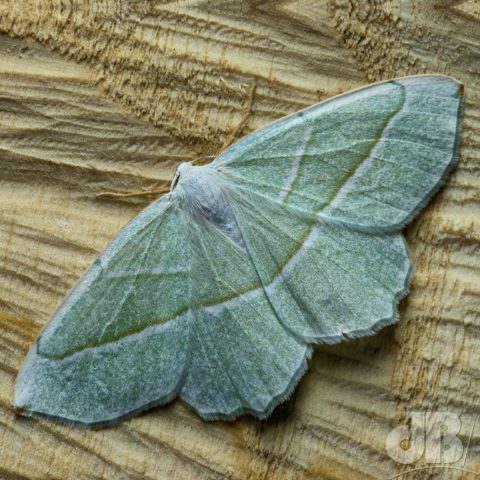TL:DR – There are numerous green moths, they have evolved to mimic leaves and so evade predators through a simple camouflage mechanism.
The Light Emerald, is a geometer moth (its larvae are inchworms, measuring the earth). It is a delicate green, but not always, sometimes the green is stronger, sometimes it’s almost not green at all, but you can still tell that it is Campaea margaritaria. I had a very pale specimen to the scientific moth trap in June 2019 and posted a photo along with other interesting moths that were drawn to the actinic light.

A colleague, Martin Honey, on the Moths UK Flying Tonight Facebook group commented that he was aware of chemical research into the green pigment in this species and how it is known to be a less stable compound than any of the green pigments in an entirely different group of moths that sometimes have green, the noctuids, also known as the owlets.

The paper is from 1994 and explains the chemistry of the Light Emerald green: The chemistry and systematic importance of the green wing pigment in emerald moths (Lepidopera: Geometridae, Geometrinae). You can read about the research here. It’s definitely something I might have written about back in the day when I was doing weekly chemistry news for New Scientist magazine and others.
The green pigment in question is called geoverdin and it is the only green pigment the moth needs. Chemically speaking it was once thought to be a bile pigment, but it turns out to actually be a derivative of the green pigment from photosynthesising plants, chlorophyll, consumed during the moth’s larval (caterpillar) stage. The researchers in the paper cited used good-old thin-layer chromatography to give the elusive moth pigment a little TLC and discern its characteristics.
Unfortunately, the team does not show the structure in their paper and a search for any other reference turns up nothing. However, I did find reference to the original PhD thesis from which the research paper was derived wherein it suggests that geoverdin is derived from neither bile pigments nor chlorophyll. I’ve contacted one of the team to find out more and will hopefully be able to update this post soon.